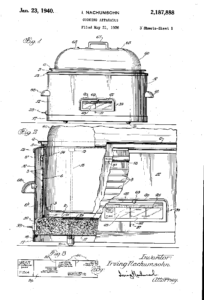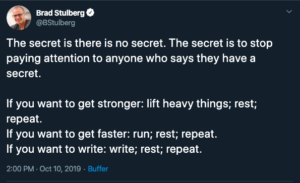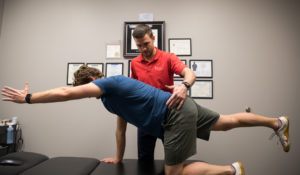Slow cooking your running program will result in less injury and more miles, therefore allowing you to stay on your training schedule by progressing running intelligently.

Crock-Pot History
 The original slow cooker was the brainchild of Irving Naxon who received a patent for the device in 1940. However, the device took off in the early 1970s after the patent was sold and started being produced in mass quantity under the name, Crock-Pot. To clarify, Crockpots are not a sexy way of cooking. Comparatively, Instapots can do much more and sous vide are slow cookers’ pretentious cousin. With that being said, I love that a Crock-Pot is safe, dependable, and accessible. Think about the last potluck you went to, how many Instapots did you see?
The original slow cooker was the brainchild of Irving Naxon who received a patent for the device in 1940. However, the device took off in the early 1970s after the patent was sold and started being produced in mass quantity under the name, Crock-Pot. To clarify, Crockpots are not a sexy way of cooking. Comparatively, Instapots can do much more and sous vide are slow cookers’ pretentious cousin. With that being said, I love that a Crock-Pot is safe, dependable, and accessible. Think about the last potluck you went to, how many Instapots did you see?
At this point, you may be wondering what the heck Crock-pots and running have to do with each other. It all comes down to a simple equation and :
Load > Capacity = Injury
This equation is not unique to a running program. In fact, it helps us understand injury at every level. The similarity between a running program and crock-pots is the value that comes from slow-cooking your training.
First off, load is any challenge to our body. Load could be physical (5-mile run), psychological (stress), or emotional (fear). However, for the simplicity of this blog, our focus will be placed on the physical load that runners experience. With that being said, most of our attention will be on capacity. Capacity is best thought of as our preparedness or ability to tolerate load.
How can one build capacity?
Capacity is the ability to perform X. In this case, X would be running. The simplest answer to build capacity for running…is to run!
The secret is…there is no secret. If you want to become better at running: Run, Rest, Repeat. See full tweet here:

The nuance lies in the ability to progress running in a logical way. Like the classic, Goldilocks and the Three Bears: training can’t be too much, too little, but needs to be just right. If a runner does too much, too soon, they are at an increased risk of injury. If a runner doesn’t do enough, then we don’t improve our capacity and once again risk injury. Finding the amount that is just right is where the magic happens. Unfortunately, this is where many people swing and miss.
Real Life Patient Example
I recently had a patient who came to me because she was frustrated with lower back and hip pain during her running. She had previously run long distances, but the pain had got the best of her and she was currently only able to run for 9 minutes. After some discussion, she arrived on the goal of wanting to be able to run 30 minutes.
A few treatments later she noted that she was feeling pretty good, and I could tell that her hip and lumbar spine mechanics had improved dramatically. Therefore, I was surprised to hear that she was still only running for 9 minutes. When I asked her, what was stopping her from running further? She noted she was afraid of injury.
I encouraged her that in order to reach her goal of 30 minutes, she needed to push past 9 minutes. Importantly, in order to tell if you can run, you need to try to run. How would we be able to tell if treatment was helping us reach our goal if we never exceed our previous limitation?
The goal for the following week was to increase her running to 10 minutes. This is approximately a 10% increase in her volume. A good rule of thumb for progressing your training volume is 10% per week.

Additional options rather than just adjusting time or mileage could be:
- Run for 5 minutes, walk 1 minute, run for 5 additional minutes
- Dynamic warm-up for 3-5 minutes, followed by 9 minutes of running
- Perhaps increase her cadence 5-10% or play around with the other 10 Commandments for Runners
Increasing your capacity safely is all about slow cooking. Think CrockPot rather than Pressure Cooker. It may not be sexy but it is effective. Capacity has to be earned. A clinical pearl that has stuck with me and I use every day:
The test is the exercise and the exercise is the test.
The act of running is the rehab for progressing running. Check out an awesome blog from Greg Lehman that inspired many of the ideas of this blog post. To tell if you can run, you need to try to run. A baseline needs to be set so there can be a plan to get where you want to go.
If you need a little more help, check out my return to a running program.
Running Program Take Homes:
- Set a baseline: If you want to run, set a timer or distance and go for it. You need to first see where you are at before you can determine where you want to go.
- Minimize week to week variation – slow cook the process and avoid prolonged time off
- Avoid peaks and spikes in load: 10% increase per week
- Slow Cooker > Instapot



